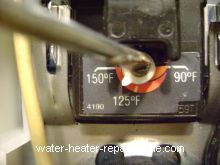Shopco
Member
I have been trying to educate myself about domestic water this past year preparatory to re-plumbing my house, as my past experience concerned only wastewater. I have assembled files full of notes. Often I have been directed by web searches to forums, and I will say that there are more than a few of these notes with Dittohead’s moniker on them.
I would like to take this opportunity to thank Dittohead and all the others, including Gary Slusser and Tom Sawyer for the invaluable assistance they have provided. Whatever amount of success I may achieve in designing and installing my own system, it would not be possible without you. Thank you.
Now, while I am generally loath to offer assistance or advice on these matters due to my obvious lack of experience, I feel I must speak up regarding this chlorination discussion. I do not believe that it is safe to remove chlorine without taking compensating measures. This opinion is based partly on personal, subjective, experience and partly on fact. The fact part is, that without chlorine or some other form of disinfection, you will be fostering colonies of bacteria. This is not disputed. As to whether these bacteria are harmful or not is another question.
I have already mentioned my personal experience with de-chlorination in this thread but I now feel the need to expand on it. The health problems my wife and I experienced (more me than my wife) were chronic and at times moderate to severe abdominal pain. Removing the GAC greatly reduced these symptoms but did not entirely eliminate them. It was not until I stopped ingesting water from the hot water tap that they disappeared. This process took many years.
The conclusion I have drawn is that my ailments were caused by bacteria because they diminished when I reintroduced chlorine to the system and went away entirely when I stopped using hot water to make coffee and cook with (chlorine is evaporated in the hot water heater).
Qualifiers: I use municipal water from a city of 225,000 that draws its water from wells and adds chlorine, not chloramine. My plumbing is copper.
Summation: If you do remove chlorine at POE then do what Dittohead said; disinfect your pipes periodically.
I hope this is helpful, and again, thank you all for a great forum.
- Bruce
I would like to take this opportunity to thank Dittohead and all the others, including Gary Slusser and Tom Sawyer for the invaluable assistance they have provided. Whatever amount of success I may achieve in designing and installing my own system, it would not be possible without you. Thank you.
Now, while I am generally loath to offer assistance or advice on these matters due to my obvious lack of experience, I feel I must speak up regarding this chlorination discussion. I do not believe that it is safe to remove chlorine without taking compensating measures. This opinion is based partly on personal, subjective, experience and partly on fact. The fact part is, that without chlorine or some other form of disinfection, you will be fostering colonies of bacteria. This is not disputed. As to whether these bacteria are harmful or not is another question.
I have already mentioned my personal experience with de-chlorination in this thread but I now feel the need to expand on it. The health problems my wife and I experienced (more me than my wife) were chronic and at times moderate to severe abdominal pain. Removing the GAC greatly reduced these symptoms but did not entirely eliminate them. It was not until I stopped ingesting water from the hot water tap that they disappeared. This process took many years.
The conclusion I have drawn is that my ailments were caused by bacteria because they diminished when I reintroduced chlorine to the system and went away entirely when I stopped using hot water to make coffee and cook with (chlorine is evaporated in the hot water heater).
Qualifiers: I use municipal water from a city of 225,000 that draws its water from wells and adds chlorine, not chloramine. My plumbing is copper.
Summation: If you do remove chlorine at POE then do what Dittohead said; disinfect your pipes periodically.
I hope this is helpful, and again, thank you all for a great forum.
- Bruce

